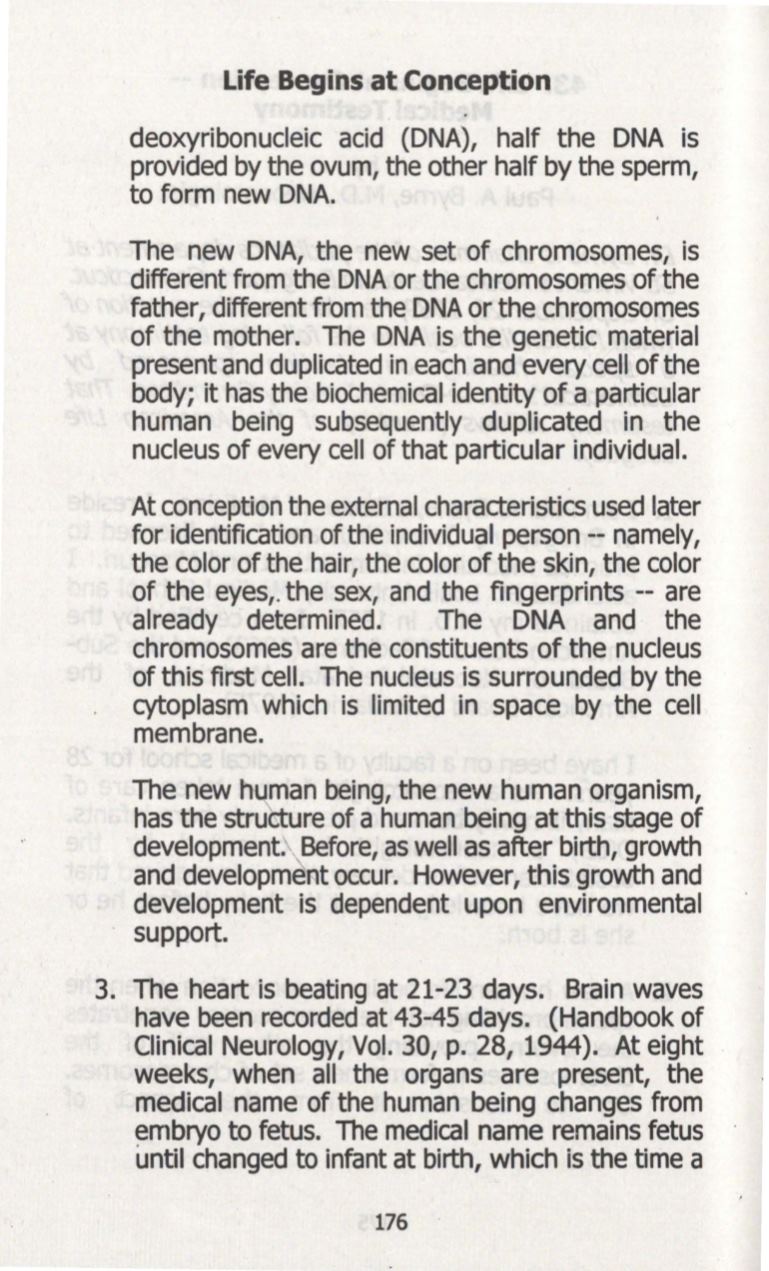

Life Begins at Conception
deoxyribonucleic acid (DNA), half the DNA is
provided by the ovum, the other half by the sperm,
to form new DNA.
The new DNA, the new set of chromosomes, is
different from the DNA or the chromosomes of the
father, different from the DNA or the chromosomes
of the mother. The DNA is the genetic material
present and duplicated in each and every cell of the
body; it has the biochemical identity of a particular
human being subsequently duplicated in the
nucleus of every cell of that particular individual.
At conception the external characteristics used later
for identification of the individual person -- namely,
the color of the hair, the color of the skin, the color
of the eyes,. the sex, and the fingerprints -- are
already determined.
The DNA and · the
chromosomes are the constituents of the nucleus
of this
first
cell. The nucleus is surrounded by the
cytoplasm which is limited in space by the cell
membrane.
The new
~man
being, the new human organism,
has the structure of a human being at this stage of
development.\ Before, as well as after birth, growth
and
developm~t
occur. However, this growth and
development is dependent upon environmental
support.
3. The heart is beating at 21-23 days. Brain waves
have been recorded at 43-45 days. (Handbook of
Clinical Neurology, Vol. 30, p. 28, 1944). At eight
weeks, when all the organs are present, the
medical name of the human being changes from
embryo to fetus. The medical name remains fetus
until changed to infant at birth, which is the time a
176
















